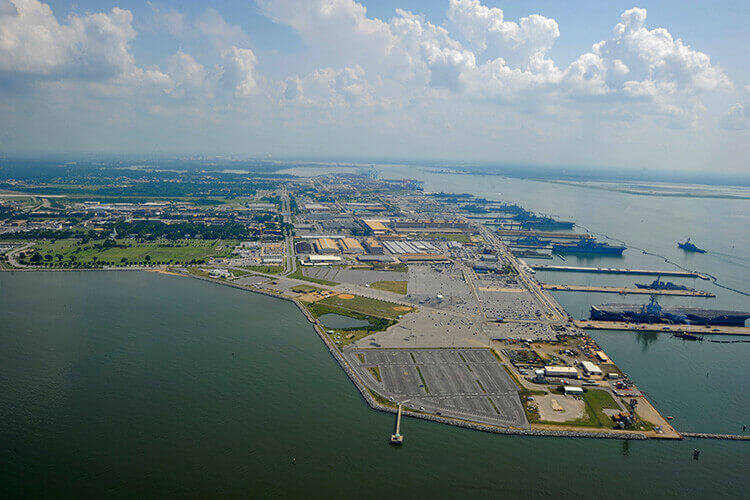Climate Proposal Aims to Reduce Stormwater Pollution from Military Bases — Especially Around Chesapeake Bay

Lawmakers from Chesapeake Bay states are looking to attach a climate-related provision to the must-pass annual defense bill.
U.S. Sen. Tim Kaine, (D-Va.), introduced Thursday legislation that would allow the Defense Department to use several sources of federal funds to undertake stormwater management projects at military bases.
The plan also has been backed by House members from Virginia and Maryland and Democratic Sens. Ben Cardin and Chris Van Hollen of Maryland and Mark Warner of Virginia.
Kaine, a member of the Armed Services Committee, wants to add the measure to the fiscal 2022 defense bill, an aide told States Newsroom.
The bill would apply to bases nationwide, but Kaine highlighted its importance for the Chesapeake Bay watershed, the largest estuary in North America. The Department of Defense has several installations in the watershed, including Norfolk Naval Air Station, Naval Air Station Oceana and Joint Base Langley-Eustis in Virginia.
Stormwater is the only pollutant into the watershed that is increasing, according to Kaine’s office. More intense storms caused by climate change have led to heavier stormwater loads in recent years, a press release said.
The House passed a companion bill sponsored by U.S. Reps. Bobby Scott, (D-Va.); Rob Wittman, (R-Va.); Elaine Luria, (D-Va.); John Sarbanes, (D-Md.); Anthony Brown, (D-Md.); and Nancy Mace, (R-S.C.), as part of the defense authorization bill in September.
The stormwater proposal would make eligible federal funds from military construction budgets, the Defense Community Infrastructure Program and other sources to adapt military bases and surrounding roads to better contain stormwater.
The measure would require such projects to both improve military resilience and protect “nearby waterways and stormwater-stressed ecosystems.”
Eligible projects could include the installation or expansion of stormwater ponds, pavement that allows stormwater to drain into the earth and on planters, tree boxes and rain gardens that reduce storm runoff. The bills would require the Defense Department to prioritize buildings and grounds that need to be retrofitted to reduce storm runoff.
Kaine said the issue was one of military readiness and environmental protection.
“Sea level rise, flooding, and stormwater pollution threatens not only our environment and economy, but our military readiness too,” Kaine said in a statement. He added the bill would “help our Armed Forces protect our military bases and environment from the effects of climate change.”
Lawmakers started adding climate provisions to the annual defense bill in fiscal 2018, when an amendment that declared climate change a threat to national security passed overwhelmingly in a Republican Congress, said John Conger, director emeritus of the Center for Climate and Security, a nonpartisan think tank focused on the security threat posed by climate change.
“While climate has been polarizing in the past, climate security has not been,” he said. “From the left wing to the right wing, generally people want to promote resilience and to take these factors into account in strategy.”
The fiscal 2020 version established a Climate Security Advisory Council that reports to the director of national intelligence. The 2021 bill commissioned a report on the effects of climate change on the U.S. Coast Guard.
The bill that the House passed for fiscal 2022 includes the phrase “climate change” in six separate sections, including one that would require the Pentagon to take “climate change into consideration when carrying out resiliency efforts and making energy and transportation decisions for military bases and installations.”
The defense bill is likely one of the major pieces of legislation Congress will seek to pass this year, following consideration of a $1.2 trillion physical infrastructure bill and a $1.75 trillion social and climate spending plan.




 Creative Commons Attribution
Creative Commons Attribution